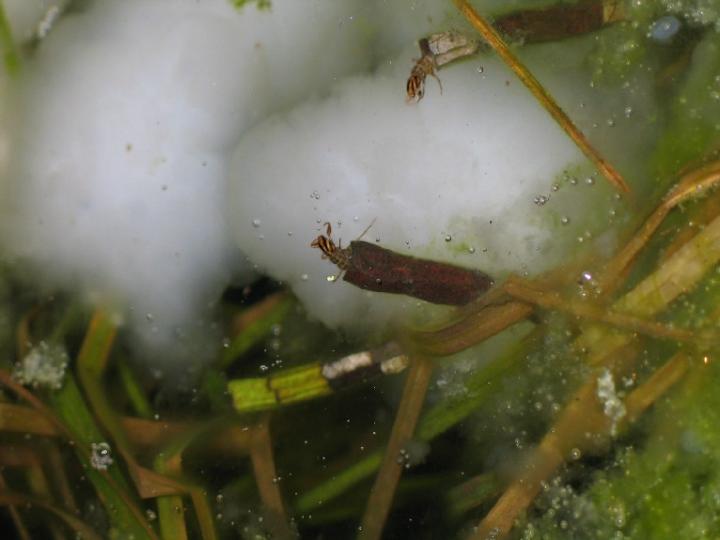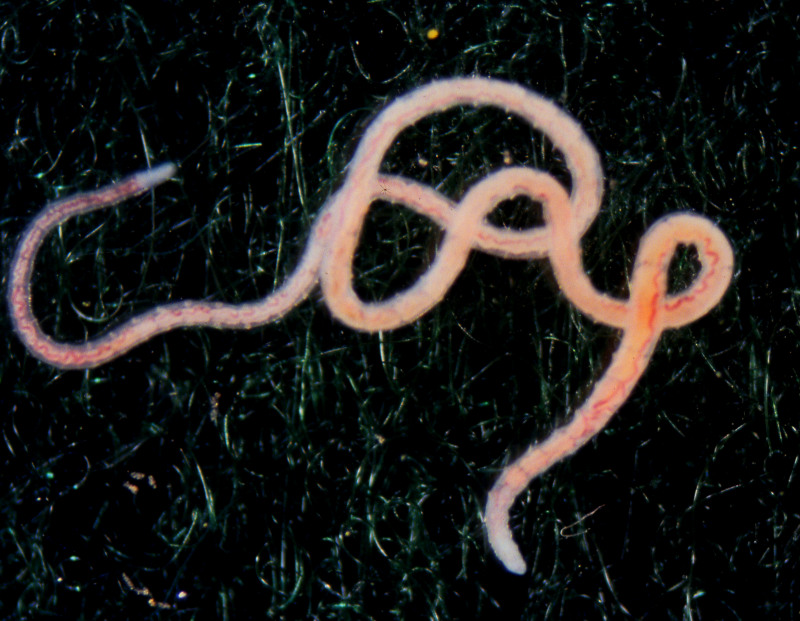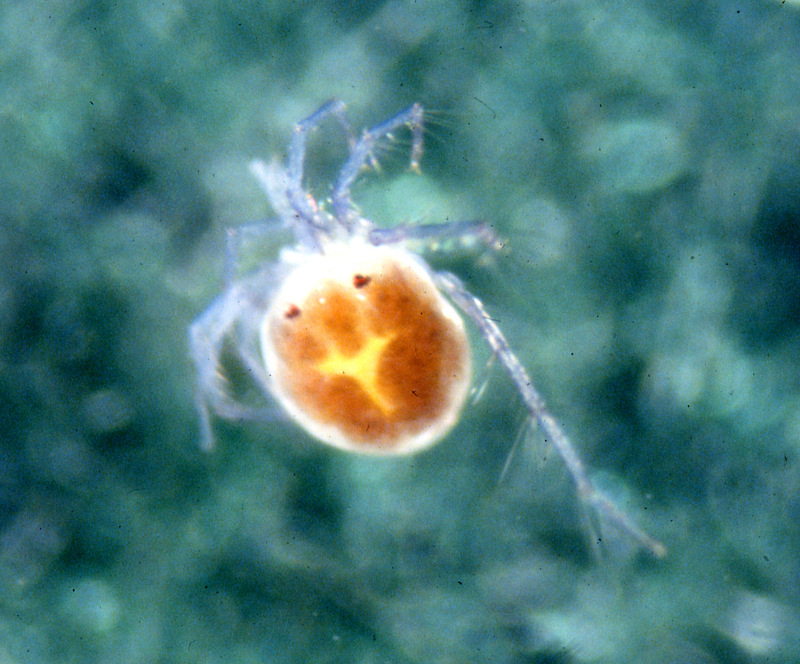 Vernal Pool Invertebrates
Vernal Pool Invertebrates
Crustaceans
Fairy Shrimp (Order Anostraca, Family Chirocephalidae) - INDICATOR
Fairy shrimp are found exclusively in temporary pools where fish are absent.
They are exquisitely adapted to this environment. Anostraca can regulate
their oxygen consumption and withstand very low oxygen levels. Fairy shrimp
are large-bodied filter feeders that serve as an important link between primary
producers and predators. They feed on bacteria, microzooplankton, and detritus.
They are also preyed on by a number of other organisms, including salamanders,
beetles, and hemipterans. As with other crustaceans, fairy shrimp go through
several stages of development, or instars, in order to reach adulthood.
Anostraca are recognized by having no external shell, two compound eyes, and two sets of antennae. Their abdomen terminates with a pair of tail-like cercopods.
Fairy shrimp swim 'upside-down' on eleven sets of swimming legs that are also used to take up oxygen. Each swimmeret is rimmed with swimming (natatory) setae. These setae increase surface area, which increases mobility and oxygen absorption. The swimmeret setae of a springtime fairy shrimp (Eubranchipus vernalis) were photographed with an electron microscope at 30x. The second picture (SEM at 200x) depicts the laterally branched setae, which function as oar-like structures.
In order to avoid the increasing number of predators that find the pool by summer, fairy shrimp hatch in late winter and early spring, and they can be seen swimming under the surface of ice-encrusted pools. Female fairy shrimp lay their eggs before pools dry up. They can produce two types of eggs; summer eggs hatch quickly and the young develop in the same season, while winter eggs fall to the bottom of the pool and remain there after the pool dries up. The winter eggs are hard-shelled, withstand freezing and drying, and actually require a period of dryness in order to hatch. They hatch the following spring when the pool refills, and dissolved oxygen levels are at their peak. The rapidity of the fairy shrimp life cycle is impressive. All stages of the life cycle (from the egg hatching, to numerous molts of immature instars, to adult reproduction and finally female egg laying) can occur in as few as 16 days (Peckarsky et al. 1990).
Fairy shrimp males and females are sexually dimorphic. The females are easy to identify when they are carrying eggs in their brood pouch.
Male fairy shrimp can be identified by their enlarged second antennae, which hang down like long trunks from the head and are used to clasp females during copulation. The females lack this modification of the second antennae. The female second antennae, located between the compound eyes, are short and stout. The first antennae are thread-like.
Two species of fairy shrimp found in Pennsylvania are the eastern fairy shrimp (Eubranchipus holmani) and the springtime fairy shrimp (E. vernalis). The most frequently encountered species in Pennsylvania is the springtime fairy shrimp. E. vernalis has straight, smooth antennae, while E. holmani has longer antennae with medial serrations. The image to the right is a close-up view of male Eubranchipus vernalis second antennae.
Clam Shrimp (Order Spinicaudata, Family Limnadiidae ) - FACULTATIVE
Clam shrimp are less commonly encountered than fairy shrimp. The Euroamerican clam shrimp
(Limnadia lenticularis) and the diversity clam shrimp (Eulimnadia diversa) have been documented
in Pennsylvania.
Copepods (Class Maxillopoda, Subclass Copepoda, Families Canthocamptidae, Cyclopidae, and Diaptomidae ) - FACULTATIVE
Copepods are a type of crustacean recognized by an elongate, clearly segmented body. They are mostly omnivorous, feeding on a wide variety of foods from detritus, pollen, rotifers, and bacteria to the larvae of fish and diptera. They can tolerate very low oxygen levels and reduce their metabolic rate under stressful environmental conditions.
Female copepods can lay two types of eggs; one type hatches quickly, the other is a resting (diapausing) egg that can remain dormant during periods of freezing and drought. Dormant eggs can be viable for tens of years, even hundreds of years.
Seed Shrimp (Class Ostracoda, Families Candoniidae and Cypridae) - FACULTATIVE
Ostracods are the most ancient known form of microfauna. The earliest freshwater ostracods came
from coal-forming swamps, ponds, and streams of early Pennsylvanian age. The body is enclosed
in a bivalved carapace; they look like a little clam with legs. Ostracods have two forms of eggs,
spring and summer. Spring eggs can only tolerate cold waters, while summer eggs can only tolerate
warm waters. The primary resting stage is the egg.
Water Fleas (Order Anomopoda, Families Daphnidae, Chydoridae, and Sididae ) - FACULTATIVE
The group 'Cladocera' contains four orders: Anomopoda (includes Daphnidae), Ctenopoda, Haplopoda, and
Onychopoda. Cladocerans are highly efficient filter feeders that remove significant amounts of algae
from the water. Cladocerans have a body without clear segments, a transparent carapace that attaches
at one point on the 'neck' and wraps around the body like a cape with the head exposed. They have a
central compound eye and highly visible second antennae with swimming setae. These look like swimming
legs. Cladocerans can reproduce asexually and sexually.
They have three types of eggs: two types are resting eggs which can withstand heating, drying, and freezing. The third type develops immediately into young. Females use their carapace as a brood chamber for eggs and newly hatched young (called neonates).
Insects
Beetles (Order Coleptera)
Predaceous Diving Beetles (Family Dytiscidae) - FACULTATIVE
The predaceous diving beetles reign supreme in the vernal pool environment.
The Dytiscidae are well adapted to aquatic environments, which is evidenced
by the diversity of species. There are 500 species described for North America alone.
The members of the Dytiscidae family come in a wide range of sizes and patterns, but can be recognized in the field by their 'swimming stroke.- They move both hind legs in unison rather than alternating legs, and long swimming hairs on their legs propel them through the water.
Adult Dytiscids are wonderfully adapted for both aquatic and terrestrial existence. To fly, the adults must first crawl out of the water and fill large thoracic sacs with air. When they return to the water, they crash land in the water because their legs are modified strictly for swimming, not landing. After landing, they bob to the surface, fill a subelytral air chamber that they use for breathing under water, and deflate the thoracic air sacs (Merritt and Cummins 1996).
Larval and adult predaceous diving beetles feed voraciously on invertebrate and vertebrate organisms (Rosenberg and Danks 1987). They hunt using visual clues, seizing any moving object, but they will also scavenge opportunistically. Salamander larvae are frequent prey items because they constantly expose themselves as they search for enough food to support their rapid growth (Kenney and Burne 2000).
The Dytiscids are built for swimming and speed. The Acilius beetles are sleek, smooth, and tapered around all edges like speed boats. Apparently this posed a challenge for the males during breeding. Male Acilius developed unique modifications to their front feet (tarsi) that helped them literally get a grip on females during mating. The females lack this modification, an example of sexual dimorphism.
Crawling Water Beetles (Family Haliplidae) - FACULTATIVE
The crawling water beetles are a small family by beetle standards. There are only four
genera and 70 species known from the United States and Canada. The adults are easily
recognizable by their brightly colored wings and unusual hind legs. The bases of the
hind legs are expanded into broad plates that cover all but the tip of the abdomen.
These modified legs trap air to help the beetles breathe and maintain a good position in the water.
Both adults and larval beetles are herbivores, and are associated with dense aquatic vegetation or algal mats often found in vernal pools or along the edges of lakes and ponds. The adults move by crawling about in the vegetation and are poor swimmers. Adult females of the Haliplus genus have been observed biting a tiny hole in a filament of algae before laying a few eggs into a plant cell. The larvae grow through three instars over a period of 20-25 days before building a pupal chamber in firm mud. They pupate for 4-6 days before emerging as adults (Merritt and Cummins 1996).
Water Scavenger Beetles (Superfamily Hydrophiloidea) - FACULTATIVE
The Hydrophiloidea superfamily is a large group that is second only to the Dytiscidae in diversity.
Hydrophilids generally prefer standing water. Most larvae are predaceous, feeding avidly on
invertebrate prey. The adults are omnivorous and eat a smorgasbord of live and dead plant and
animal material. The adult beetles are recognizable by their clubbed antennae.
The members of the family Hydrochidae are unlike the majority of the Hydrophiloidea, in that they are poor swimmers. Instead of swimming actively around the pond, they are found crawling on vegetation. The cuticle of this Hydrochus sp. is deeply punctate and exudes a waxy substance that may help minimize desiccation from exposure to water, sun, and air.
According to Wiggins (1980), the Hydrophilid genera Anacaena, Helophorus, and Hydrobius are overwintering spring recruits. The genera Cymbiodyta, Enochrus, Hydrochara, and Tropisternus are non-wintering spring migrants.
Springtails (Order Collembola) - FACULTATIVE
Springtails are small (<3 mm) wingless insects that have a unique ventral tube on the underside of
the first abdominal segment. Many also feature a forked appendage near the tip of the abdomen
called a furcula, which is used to launch the springtail in a jumping motion. Springtails do not
undergo complete metamorphosis, rather they pass through anywhere from 2 to 50 molts in a lifetime,
depending on the species. It can be difficult to distinguish the adult form of a Collembola.
Eggs are typically laid in moist habitats and hatch within a few weeks. Some species have eggs that can diapause overwinter or through periods of dryness. Collembola are known to feed on a variety of dead plant material, bacteria, algae, and diatoms.
Flies (Order Diptera) - FACULTATIVE
Even though the adults are terrestrial, dipteran larvae dominate the aquatic environment. Some diptera
(i.e., midges and mosquitoes) have evolved a strategy that increases the odds that some of their eggs
will hatch during a hydrologically good year. Within a single clutch of eggs, the rate of maturity of
the eggs is staggered. In essence, this creates an egg bank that will remain viable through several
dry-wet cycles (Williams 1987).
Another adaptation to deal with this unpredictable environment involves flexibility in the length of larval maturation (i.e., midges and mosquitoes). Schneider and Frost (1996) found that the larval development stage of certain species increased in pools with longer duration, indicating larval development could slow or quicken depending on flood duration.
Other diptera (i.e., midges and mosquitoes), are rapid colonizers of new wetland habitats. Within a matter of days from inundation, adults discover the pools and oviposit in them (Batzer and Wissinger 1996).
Many dipteran larvae can survive desiccation and freezing by seeking protected moist areas under rocks and logs or by burrowing into the soil. Most families of aquatic diptera include species with desiccant resistant larvae.
Phantom Midges (Order Chaoboridae) - FACULTATIVE
Large numbers of these delicate and transparent larvae can be found in vernal pools. The larvae are
predatory and use long grasping antennae to seize prey such as mosquitoes, ostracods, copepods, and
cladocerans, but also feed on fungi and algae as well. They feed heavily on mosquitoes in the
genus Aede. Hydrostatic air-sacs allow the larvae to maintain position in the water column
without rising or falling. Two genera Mochlonyx and Chaoborus are easily separated.
Mochlonyx is distinguished from Chaoborus by its respiratory siphon, which Chaoborus lacks.
Midges (Order Chironomidae) - FACULTATIVE
Chironomids are very significant members of many aquatic ecosystems. They have rather short life
cycles, a high number of species, and are found in large densities. They are important consumers
and serve as a prey item for a wide array of predators. In these ways they are important in energy
flow and food webs. Chironomids occur in virtually any sort of aquatic environment and even certain
damp terrestrial environments. This dipteran family often comprises a high percentage of the total
diversity in streams and lakes, often greater than 50% of the total diversity. Due to difficulty
in identifying the larvae, they are often simply reported as 'Chironomidae' which often leaves total
taxa diversity underrepresented in many studies.
Chironomidae exhibit many adaptations to temporary environments. Quick dispersal and recolonization is a trait that enables some Chironomidae to tolerate frequent disturbances to their habitat. Some midges have evolved unique methods of obtaining oxygen (Sharitz and Batzer, 1999). Some benthic midges have hemoglobin in their hemolymph which can help them survive periods of extremely low oxygen. These midges appear blood red and are commonly called blood worms. Many midge larvae are particularly well adapted to survive periods of desiccation. With a variety of life history strategies, midges are often the most diverse and abundant insects in ephemeral habitats (Batzer and Wissinger 1996).
The larvae feed on a variety of detritus, plant material, and also prey upon other small animals. The larvae are recognized by their anterior and posterior prolegs and anal tubules that come in a variety of shapes and sizes.
Mosquitoes (Order Culicidae) - FACULTATIVE
Mosquito larvae are filter feeders of detritus and microorganisms, though some are known to prey on other
mosquito larvae. The larvae possess lush labral brushes that they use to catch tiny animals and pieces
of plant material. The individual setae of the mouth brushes rapidly reach and contract, creating
a current that draws particles towards them. Mosquitoes themselves are a critical source of food
for the larger predators in a vernal pool. The photo below left is of the Aedes vexans
head and thorax at 60x. The larvae are conspicuous in a pool, hanging upside-down at the water-air
interface with the tip of their respiratory siphon in the plane of the water's surface. The
photo below right (taken at 40x) displays the respiratory siphon of Aedes vexans.
Some mosquito larvae have modified respiratory structures they insert into plant roots to extract oxygen (Sharitz and Batzer, 1999). The pupae breathe through respiratory 'trumpets' located on the top of their head.
An interesting limitation to the population size of some detritivorous mosquitoes occurs when the population becomes so thick that some of the individuals are physically unable to access the plentiful detritus on the substrate (Batzer and Wissinger 1996).
True Bugs (Order Hemiptera) - FACULTATIVE
An interesting version of cyclic colonization is found in some adult hemipterans that breed in
temporary waters. The adults spend the winter in permanent aquatic habitats. Come spring, they
disperse to the inundated pools. At this time, the female's wing musculature histolyzes, and
their ovaries expand into the newly created space and finish maturing. Depending on the length
of time the pool holds water, there may be one or more generations produced that at maturity have
short wings or no wings at all. As the pool begins to dry, a long-winged generation with immature
gonads is produced. This generation returns to permanent aquatic habitats until the next wet
cycle begins (Svensson 1992).
Water Boatmen (Order Corixidae) - FACULTATIVE
Adult and nymph water boatman are herbivore-detritivores, scavengers or omnivores (Kenney and Burne 2000).
Water Striders (Order Gerridae) - FACULTATIVE
Water striders will prey upon small invertebrates on or near the surface, such as mosquito larvae.
They walk on the water surface with water-proof tufts of hair on their feet. They are also capable
fliers and will disperse to new habitats.
Backswimmers (Order Notonectidae) - FACULTATIVE
Backswimmers swim 'up-side down' with long hind legs that push together like oars in a row boat.
They have a long pointed beak (rostrum) to pierce their prey and inject digestive enzymes. They
can remain underwater for hours and maintain their position in the water column by holding air
bubbles in fringed pockets on the underside of their abdomen. They have compound eyes that provide
good vision for detecting prey. They hunt many other invertebrates such as mosquito larvae, and
also prey upon young frog and salamander larvae.
Dragonflies and Damselflies (Order Odonata) - FACULTATIVE
The nymphs of dragonflies and damselflies are top predators in a vernal pool. They consume amphibian
larvae as well as other invertebrates. Some odonate nymphs can survive desiccation and freezing
by seeking protected moist areas under rocks and logs or by burrowing into the soil.
Skimmer Dragonflies (Suborder Anisoptera, Family Libellulidae) - FACULTATIVE
Widow skimmer; Libellulidae: Skimmer larvae have notably long spindly legs and cryptic coloration.
Camouflage helps them hide in the leaves as they wait for prey. Large eyes provide excellent vision for these predators.
Spreadwing Damselflies (Suborder Zygoptera, Family Lestidae) - FACULTATIVE
Damselflies of the genus Lestes are one of the more commonly associated odonate species with vernal pools.
Lestes females lay their eggs either endophytically (within plants) or on the water near aquatic
vegetation such as Sphagnum or Scirpus. After diapause throughout the winter, eggs will finish
development and hatch in response to longer photoperiod, higher water temperatures, and adequate water
levels. The common name of 'spreadwings' applies, since adults of the group will perch vertically on
vegetation with their wings spread unlike most damselflies, which keep their wings closed when
perching.
Caddisflies (Order Trichoptera) - FACULTATIVE
Families Limnephilidae, Phraganeidae, and Polycentropidae: Various species of Limnephilus are highly
adaptable to vernal pool conditions. While they are not exclusive to temporary pool environments, they
reach their greatest densities in them. By delaying sexual maturity in dry periods through diapause,
and the use of a gelatinous cluster to protect eggs and young larvae, Limnephilus (family Limnephilidae)
can survive dry periods until flooding occurs in the ephemeral pools. The adults can live up to
three months, while other caddisfly adults live generally only a month or so. Limnephilid caddisflies
construct portable cases out of a variety of materials ranging from rock materials, plants, leaves,
or sticks. Mature Limnephilus construct either transversely or horizontally-constructed vegetative
cases of either sticks or vegetation. Some very early instar Limnephilus construct fine grained
cases of sand or pebbles. They feed largely on detritus.
Ptilostomis (family Phryganeidae) typically construct cases of leaf pieces fashioned together end to end. This is one of the first steps in converting leaf material into a form usable by smaller organisms. They occur across a range of aquatic environments, from streams to lakes to temporary pools.
The larvae are also known to be carnivorous, as seen here eating the eggs of frogs and salamanders.
Other Invertebrates
Aquatic Earthworms (Phylum Annelida, Class Oligochaeta) - FACULTATIVE
Some species of Oligochaeta are tolerant of very poor water quality. Many are specialists in a
wide range of fresh water habitats. They feed on detritus and mud, breaking down leaf litter
and mixing the soil, much like their terrestrial counterparts.
Oligochaetea can withstand drought in a vernal pool by producing a protective cocoon; they can also be transported to new habitats this way by birds.
Water Mites (Class Hydrachnida, Order Acariformes) - FACULTATIVE
Water mites are spider-like aquatic species. They have a very complex life cycle, including larvae
that are parasitic on aquatic insects and three nymphal stages. The adults are agile free swimmers
that prey upon other animals and also consume plant material.

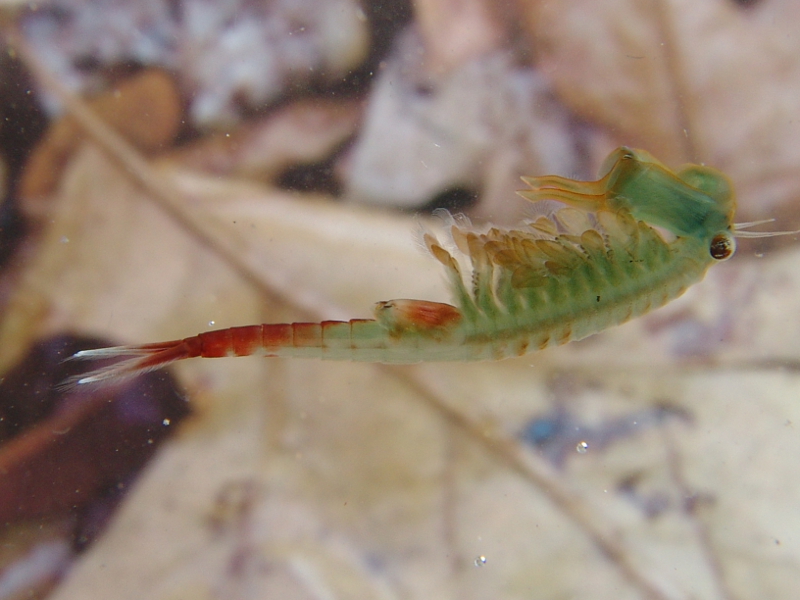


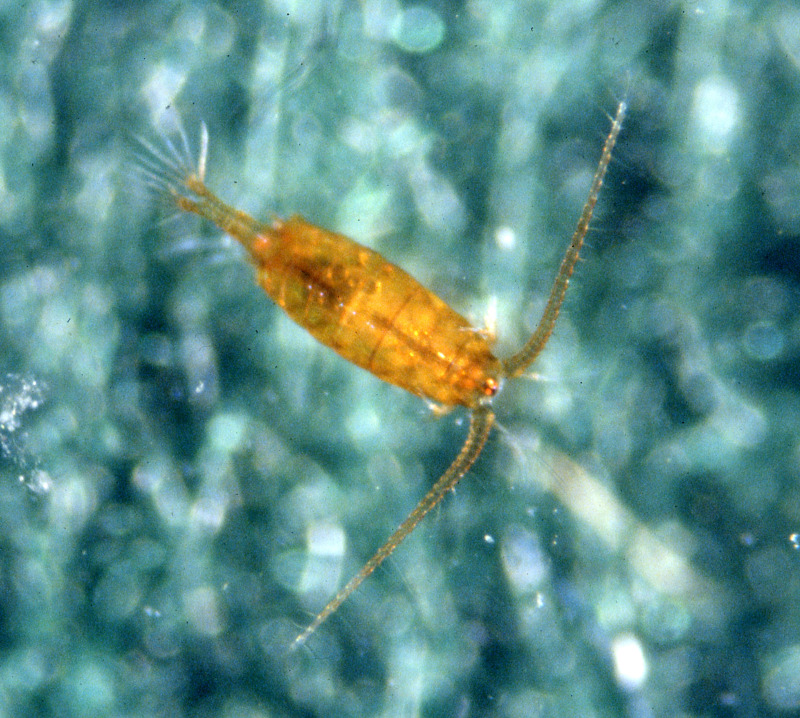

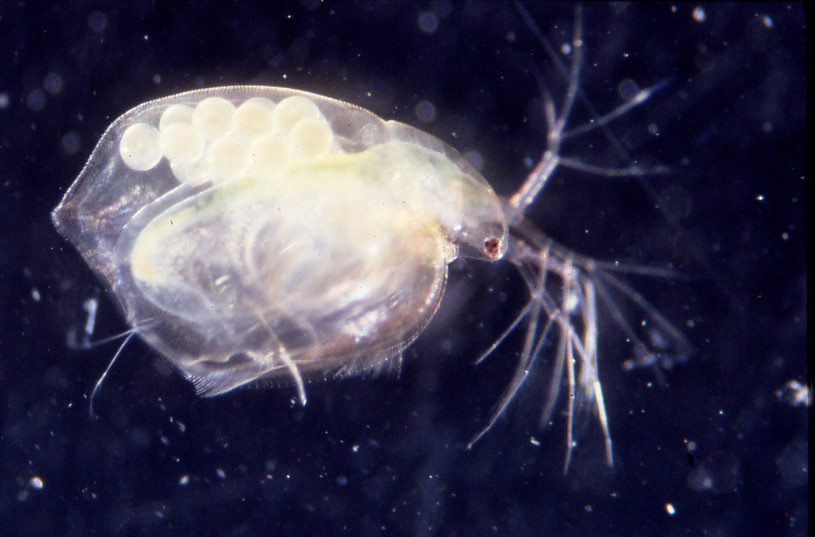
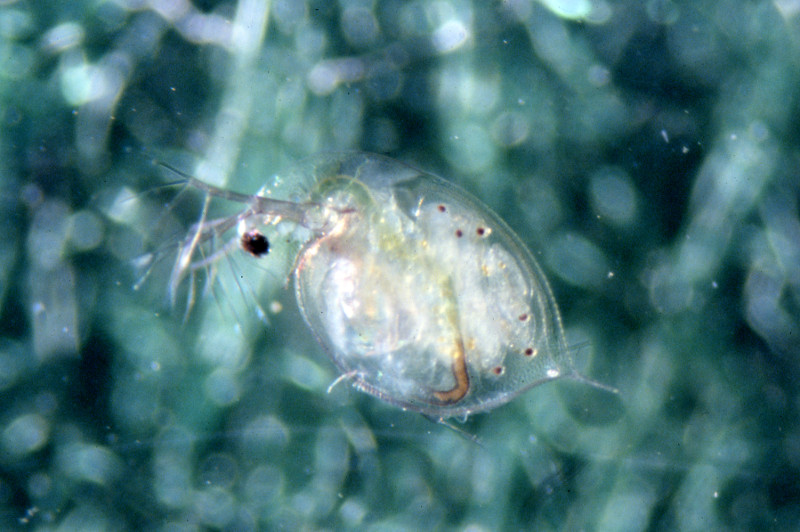
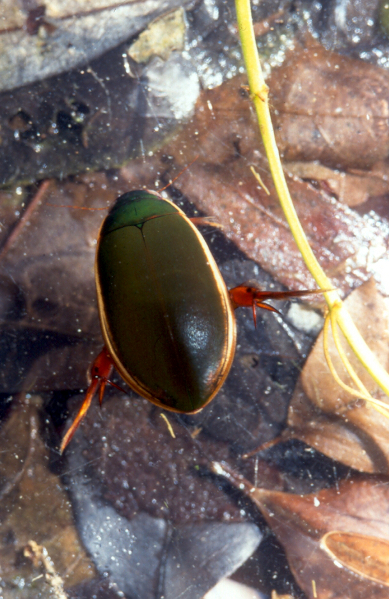
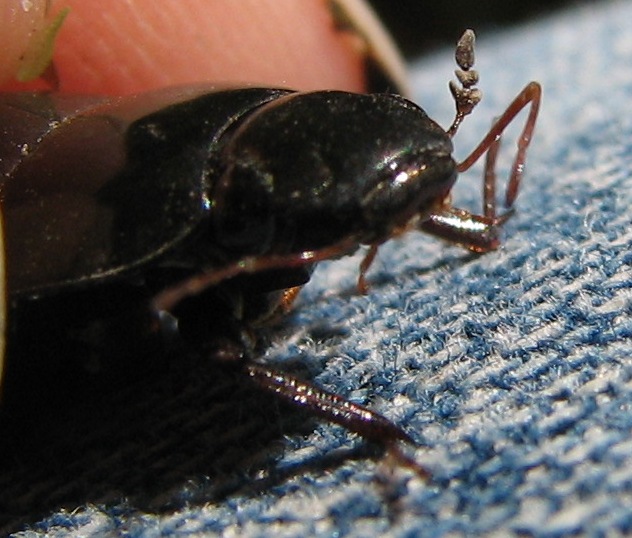
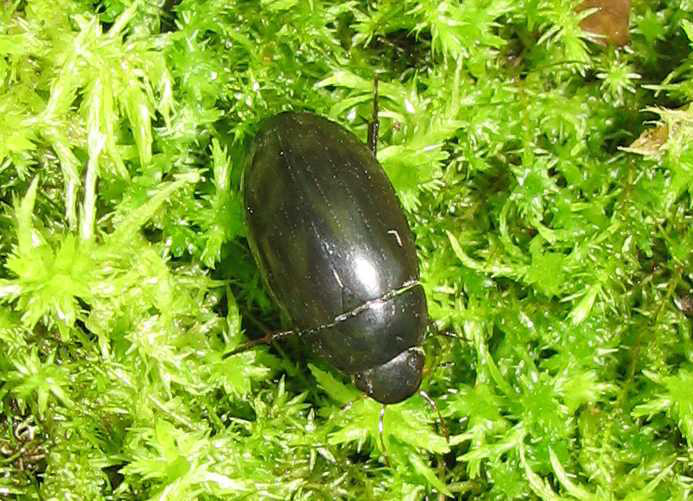

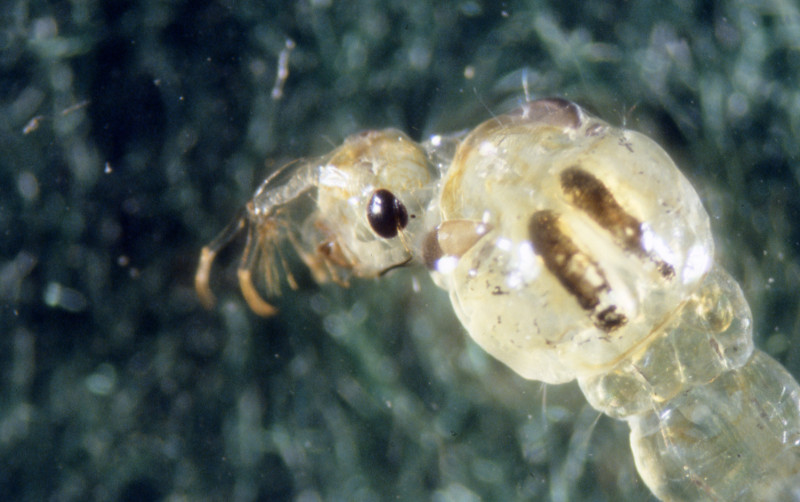

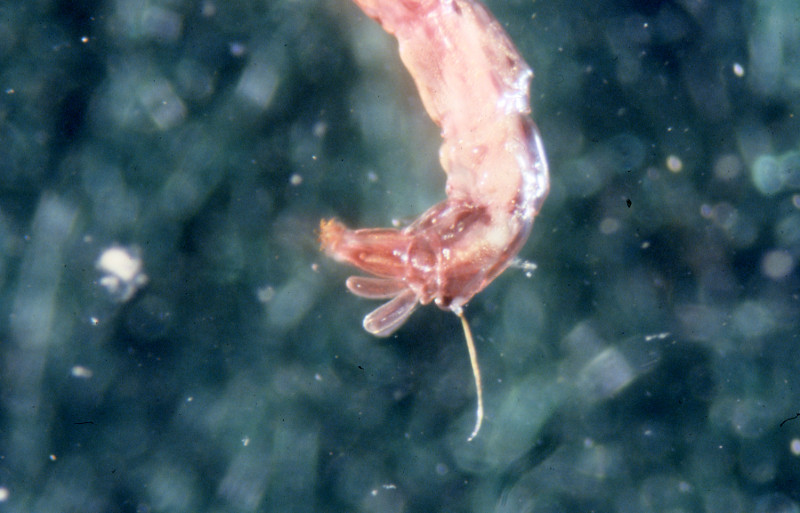
.jpg)

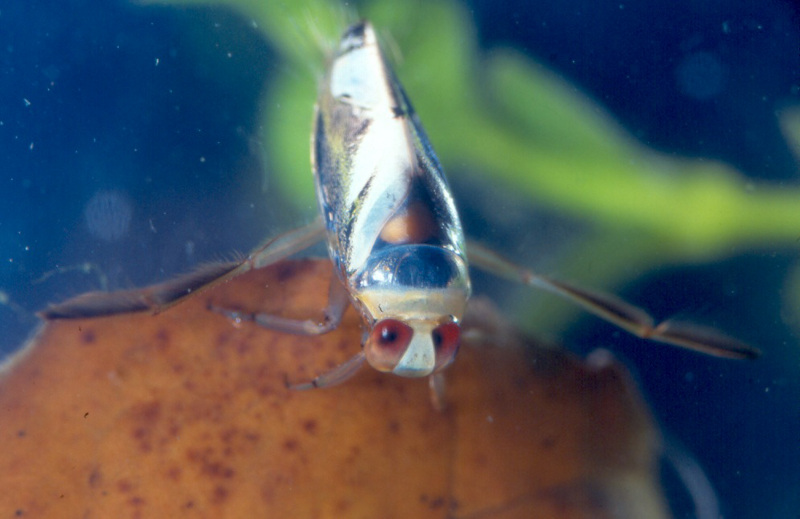

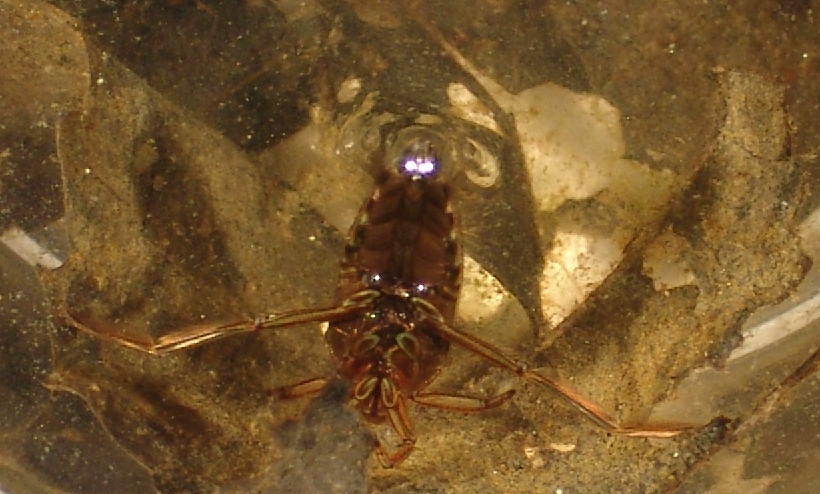
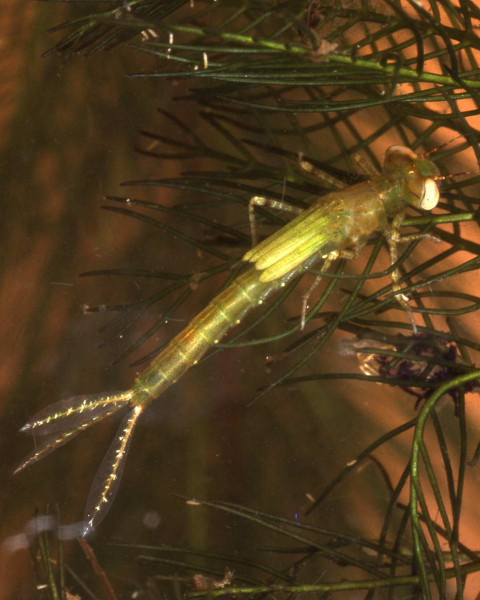
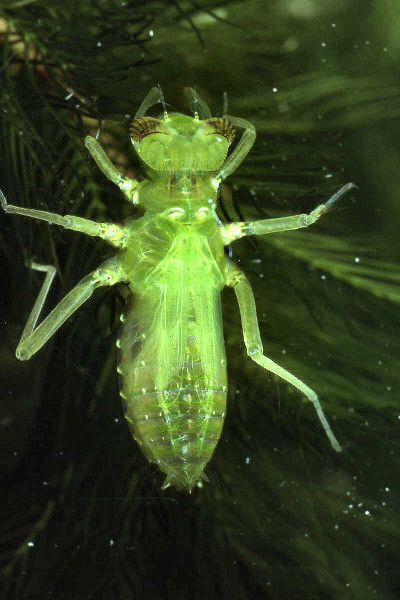
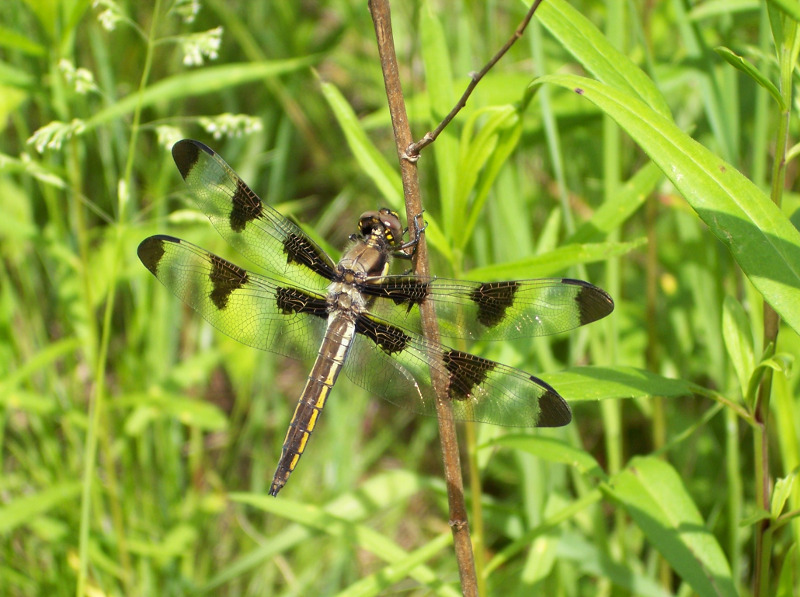

 2ndNrw9 Betsy Leppo.jpg)
